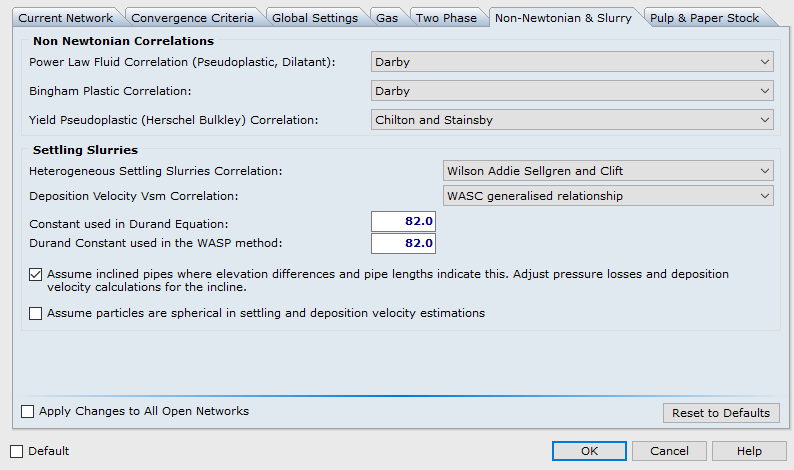FluidFlow features four methods to calculate slurry Deposition Velocity (Vsm). The available methods include:
1. WASC Generalised Relationship.
2. As a function of particle Size (suited to systems where the PSD has been defined for the system).
3. Oroskar & Turian.
4. Schiller & Herbich.
You can choose the preferred method from the drop-down menu titled "Deposition Velocity Vsm Correlation" located at:
Options | Calculation | non-Newtonian & Slurry (see image below).

Note, when modeling settling slurry systems, a scenario can arise whereby there is no result for Deposition Velocity. This condition can arise where:
- The pipe cross-sectional area is packed with particles and as such, no settling can occur.
- The model has solved as a non-Newtonian system whereby there won't be an Deposition Velocity. In this case, it's recommended that the defined particle sizes are checked.
Other methods for predicting Deposition Velocity include Durand however, its worth noting that there is a school of thought that says the Duran Method can provide a conservative (high) value for Deposition Velocity in respect of slurries of a widely graded particle sizing and/or slurries with a sizing containing significant proportions of particles finer that 100 micron.
In relation to the Schiller method, this is considered a good approach for hydrate and alumina characteristics.
Does your slurry fall under any of those categories? Maybe just something to consider.